Most people know that frost is a plant and garden killer (and if you’re new to growing and didn’t know, you do now!). It’s not always a killer, though. A lot depends on the types of plants you are growing, how hardy they are, and how severe the level of frost or freezing is.

It’s not uncommon to see frost referred to in different ways. For example, a “light frost”, mild, “moderate frost”, or “hard freeze".
Knowing what each of these refers to can help you know what you need to do to keep plants growing; or, if that's even possible.
Let’s take a look at what the different types or levels of frost mean, if and what you can do to protect your plants, and what it means for the end of your gardening season.
Light Frost
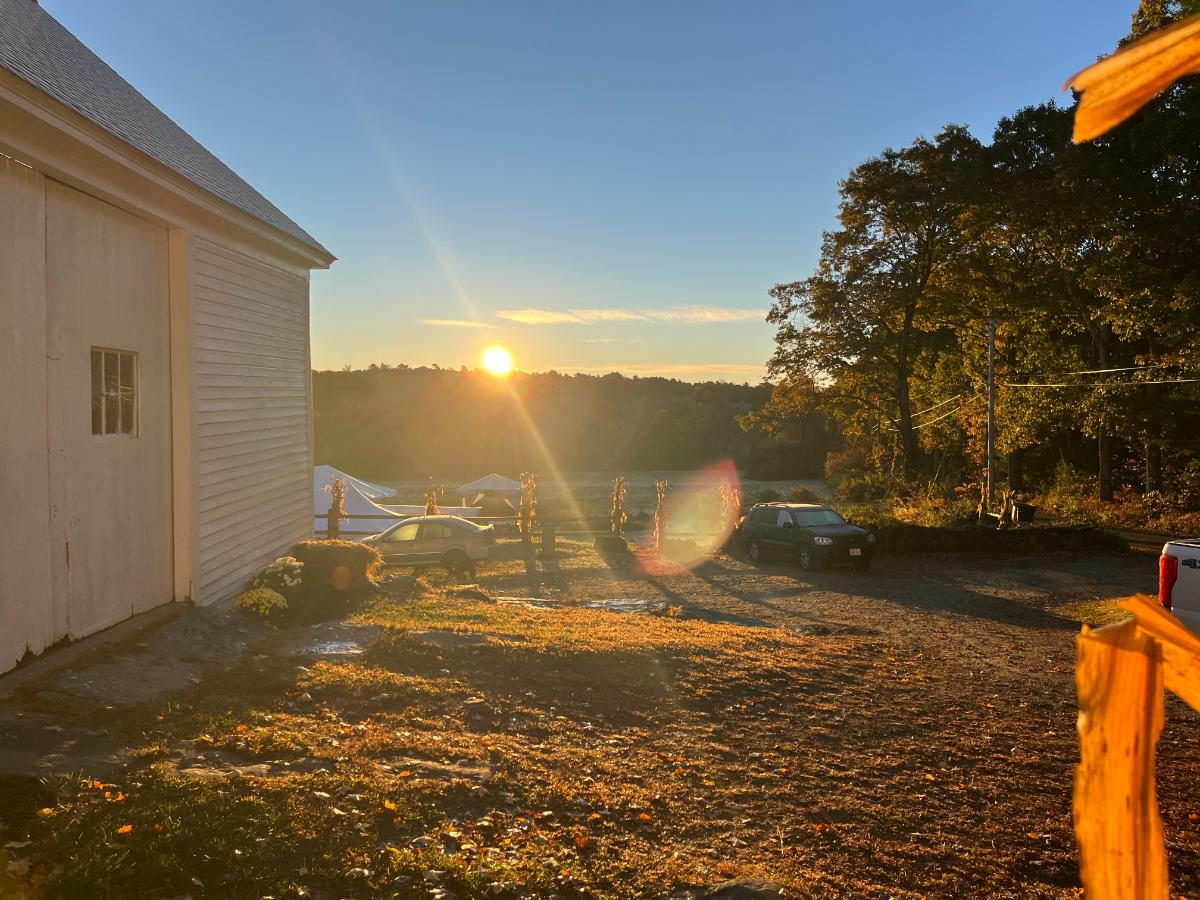
A light frost is when temperatures drop to and just below the point of freezing. This is 29 to 32 degrees Fahrenheit or -2 to 0 degrees Celsius.
There are many hardy plants that will not be much affected by a light frost (if at all). However, light frost will nip leaves on some plants and it will kill tender plants and annuals.
Sometimes, if the frost is very light and short, those tender plants will survive the very first few minor frosts with only some foliar or bloom damage; they may continue to live and produce for a bit afterwards.
Time and temperature makes a difference (for example, how long it stays in that cold range). Consecutive frosts will typically do tender plants in, even if there isn’t much difference and the frosts remain light.
How to handle a light frost:
The first few frosts are usually light. They often occur at a time of year when daytime temperatures are quite warm. Often, there is light and warmth enough during the day to keep plants growing and producing for a time after the first light frost, possibly even through the first few rounds of light frost.
That said, if you have tender plants that are sensitive to frost, you’ll need to do something to help them survive it.
The best thing to do is to start watching the weather when you get to frosty times of year. This would be around the time of your expected first frost date.
For safety’s sake, start watching the forecast a couple of weeks before that date (frost dates are only estimates based on historical averages, not facts set in stone).
When you see temperatures in the forecast that are nearing the freezing mark, make a plan and put it into action.
- Don’t wait until the forecast says 32 F or 0 C
- Protect plants when the forecast says 36 F or lower or 2 C or lower
- Local climates and microclimates vary, and you could be unpleasantly surprised!
Not only that, but forecasts are only educated guesses anyway, and they can easily vary by those last few critical degrees!
Protect vulnerable plants during a light frost
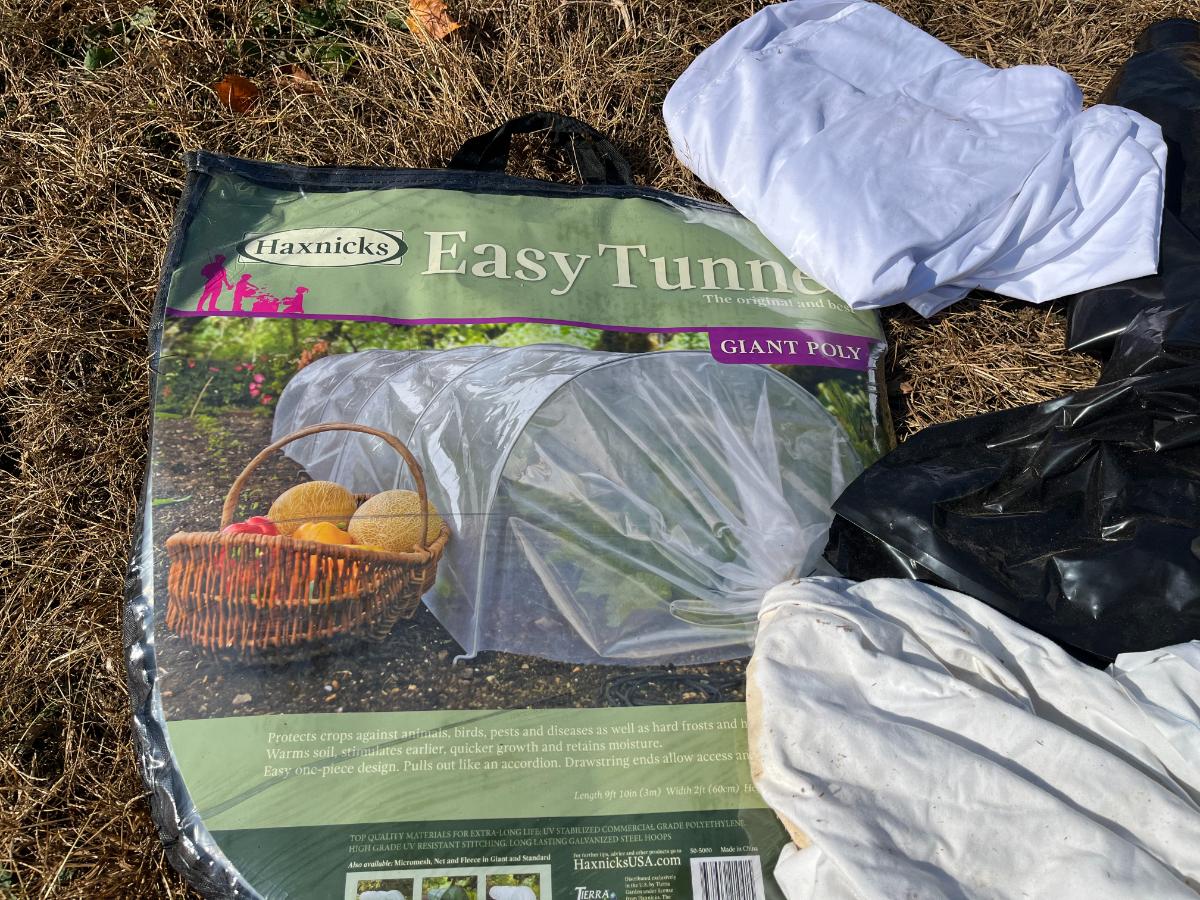
When light frost is in the forecast, take steps to protect any of the plants that you want to continue to grow.
- Cover tender plants
- Use a fabric cover such as a floating row cover, frost fabric, or old sheets and light blankets (that are not heavy enough to break the plants)
- Make sure the sides are pinned or weighted down all around
- Any air and frozen vapor that get through under the cover will allow frost to settle and damage the plants
- Cloches and overturned buckets are good covering options, too
- If you use plastic sheeting or plastic covers, make sure they don’t touch the plants because plastic will transfer cold
- You do not need to protect hardy plants like cole crops, cold weather perennials, or brassicas (broccoli, cabbage, cauliflower, etc.)
- Semi-hardy plants will usually survive a light frost, but they will do better and appreciate the protection of covering if you are up for the extra effort
If you are not concerned about continued growth and you are ready to let the season end, it is perfectly fine to let frost do its worst and simply let those plants go, too.
Plants that are killed by light frost:
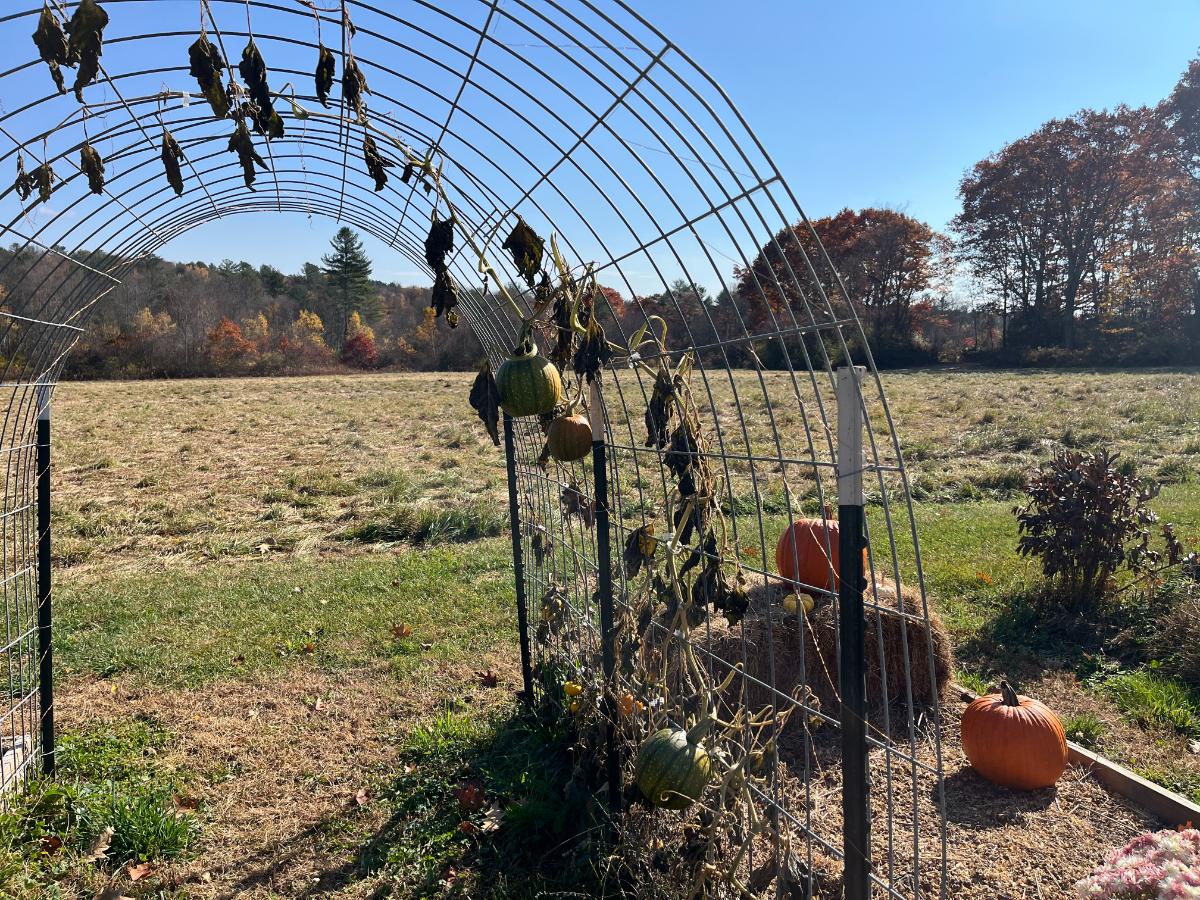
Your first line of defense against a frost is to know which plants are vulnerable. Learn which of the plants you are growing will be damaged and killed by even a light frost.
Hardier plants, cole crops, spinach, lettuce, root crops, and established cool weather vegetables and ornamental plants will live through light frosts. They will even continue to grow and produce vegetables during the day when the temperatures warm up.
Perennials, whether frost hardy or not, may be sent into dormancy but will not die (as long as they are hardy enough to live in your zone/location).
You can expect the growth and production rate to be slower, but they will grow, and you will have edible vegetables to harvest. In fact, there are many vegetables that improve in flavor and taste better after a frost.
A lot of ornamental and vegetables will be killed by a light frost if they are not protected. Some popular plants that will die in a light frost include:
- Tomatoes
- Peppers
- Pumpkins and squash
- Beans
- Melons
- Eggplant
- Okra
- Summer squash and zucchini
- Cucumbers
- Basil
- Zinnias
- Most flowers, including snapdragons and marigolds (though sometimes these will survive a very light or short-duration frost)
Some semi-hardy annuals and plants will survive and semi-hardy perennials like mums will often survive through the first few light frosts, but after several light frosts the damage seems to take its toll and they get to a point where they may be stressed or die with consecutive frosts. The flowers and buds take the hit the hardest, so even though the plant itself might not dies, it is smart to cover mum to keep mums in bloom for longer.
To keep your fall ornamental garden growing longer, check out these 15 Cold and Frost Tolerant Annuals to Grow in Cool Weather.
Moderate Frost or Moderate Freeze

A moderate frost will be cold enough to actually cause some freezing in and on the plant, not just a frosty covering of moisture and water vapor. The ground isn’t usually freezing to any appreciable depth at this point, so root damage is not significant, especially in hardier plants.
Moderate frosts and freezes occur between 25 to 28 degrees Fahrenheit or -4 to -2 Celsius.
How to handle a moderate freeze:
At these temperatures you are not going to be able to save tender annuals and tender plants, even if you cover them. The cold will be just to thorough and the covers will not be able to block enough of it.
This is the time of the year when you need to let tender, frost-sensitive plants go and focus on the plants that can tolerate a moderate frost.
Keep in mind that even those that can tolerate frost may experience some damage. For example, the leaves of broccoli and cabbage may be burned, especially on the outer layers, but the plants will often survive and rebound, and the outer damage can be peeled away. The plant can still give you edible vegetables.
You may be able to reduce some of the damage by covering these crops. Use the same sheets or row cover fabrics that you use for frost sensitive plants.
Plants that are killed by moderate frost:

Semi-hardy plants will die at these temperatures. Fruit blossoms will be heavily damaged, ending indeterminate and fall producing berry production.
While root vegetables will usually survive a hard frost, their tops will often be killed (but the roots in the ground are fine). Lettuce, chard, broccoli, kale, and similar plants should continue to produce, albeit more slowly.
Some common garden plants that will die at these exposures include:
- Bok choy
- Cauliflower
- Artichokes
- Peas
- Celery
- Radicchio
- Sunflowers
- Mums (though they will sometimes survive through a moderate frost on the warmer or shorter end; the blossoms really suffer, though)
Botanical Interests Seed Company has a good list that breaks down what plants can survive under which conditions.
Hard Freeze

A hard freeze occurs at temperatures of 24 degrees Fahrenheit and below, or -4.44 Celsius and lower.
Some resources list a hard freeze as being any time the temperature is below 28 degrees for four hours or longer. The amount of time that the temperature remains low does impact the extent of damage on plants. You might get away with some unexpected plant survival if the low temperature only lasts for a few minutes.
These are temperatures where even the ground begins to cool and freeze. The ground, which helps to radiate warmth to covered plants in light and moderate frosts, is no longer a very effective source of heat dissipation.
How to handle a hard freeze:
When a hard freeze comes, there is little that can be done. The only things that might be worth trying to save are those vegetables that can withstand a hard frost. They will need protection from row covers and season extensions.
The things you might have a chance of continuing with protection are
- Kale
- Kalettes
- Brussels Sprouts
- Collards
- Swiss chard
- Onions
- Root crops
- Parsnips
- Turnips
Note that at this point, many of these will mostly rest and not be very productive, if at all, even if they are not killed or ruined by the freezing.
Results will vary, and there are no guarantees unless you are growing in a protected environment like a high tunnel. If the cold lasts for very long and the days do not recover and warm up, you will likely need a heat source even then. For most home gardeners, this is the hard stop to the year’s gardening.
Plants that are killed by a hard freeze:

Most plants and vegetation. A few (listed above) may slowly produce depending on the length of freeze and daytime temperatures.
Hard freezes are mostly the end of gardening, but in some cases, those hardiest of vegetables will survive.
For the most part, if you were to try to continue to grow when the weather consistently sets in at this level of cold, you will need to move to a protected environment like inside growing, greenhouse or high tunnel growing.
Even then, success may require additional heating. Tender vegetables and flowers will certainly need to be heated and can not be allowed to ever freeze, even in a greenhouse.
Perennials and hardy herbs will go dormant. They will look dead but will come back from the roots in the spring. Trees and bushes that are hardy for your zone or location will, of course, come back to life in the spring as well.
Other Helpful Frost Protection Tips:

- Water all plants well the day before a frost is expected
- Hydrated plants can survive through frost much better
- Hydrated plants also release heat through the night as it evaporates from the plant, dispelling warmth around them for a period of time
- Hydrated plants mean hydrated soil, another potential for warming evaporation
- Moist soil holds heat much better than dry or sandy soils
- If frost hits unexpectedly and you’re not ready for your plants to be done, you can try to save them before the sun hits them directly by sprinkling or spraying them with water
- Go out before the sun comes up (or before it comes up very high -- before its rays land directly on the plant)
- Turn on a sprinkler or spray the plants lightly to melt off the frost and warm the plant
- The key is to do this before the sun hits and burns the plant through the ice crystals
Finally, know this: It’s okay to decide that your garden season is done.
It’s okay to not take extraneous measures to protect plants from frost if you are ready for the season to be over. It seems sometimes we forget this! Frost gives us a natural break from gardening work, and ushers us into the next season. That’s worth the rest and worth embracing, too.

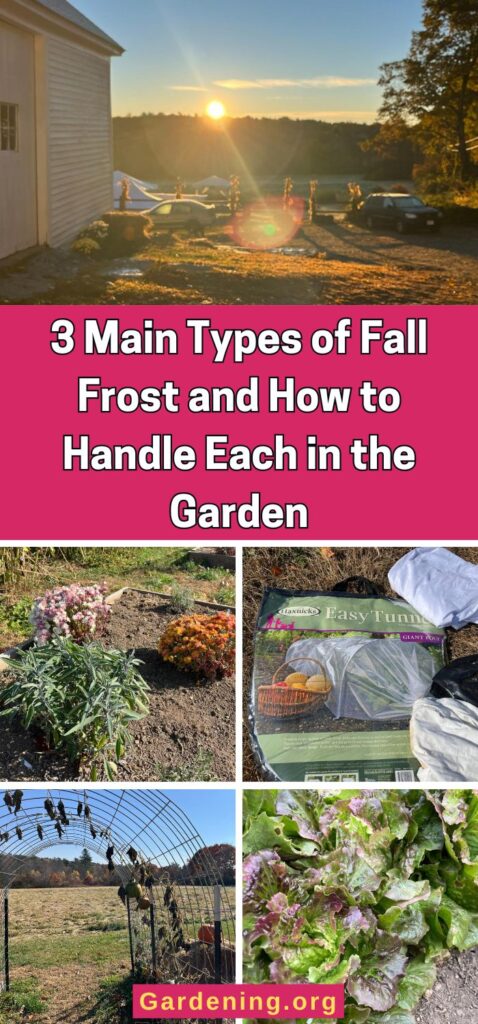

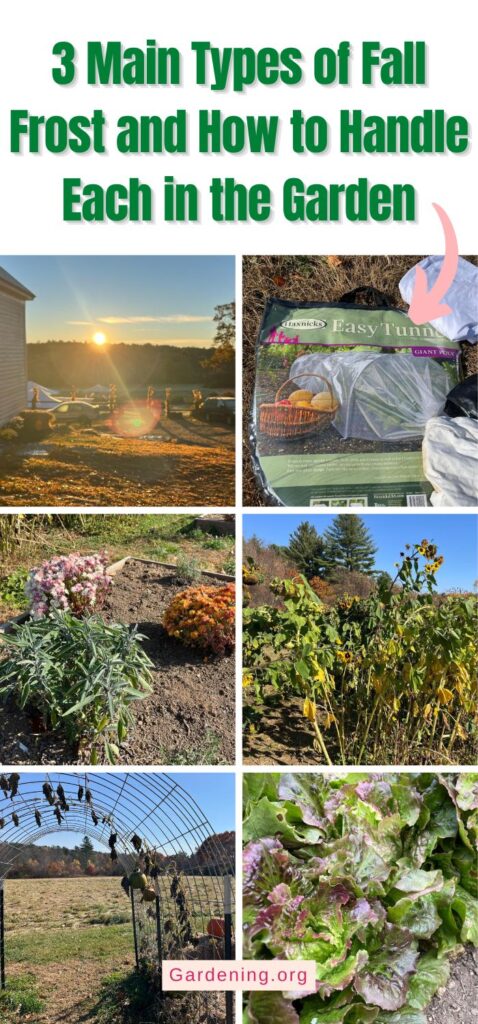





Leave a Reply